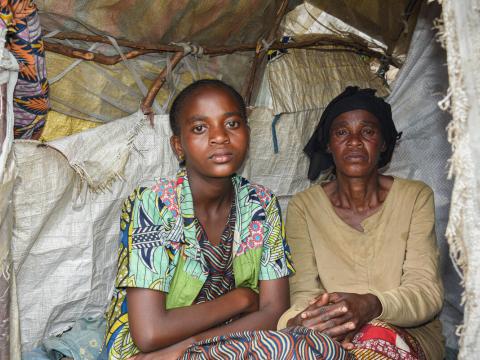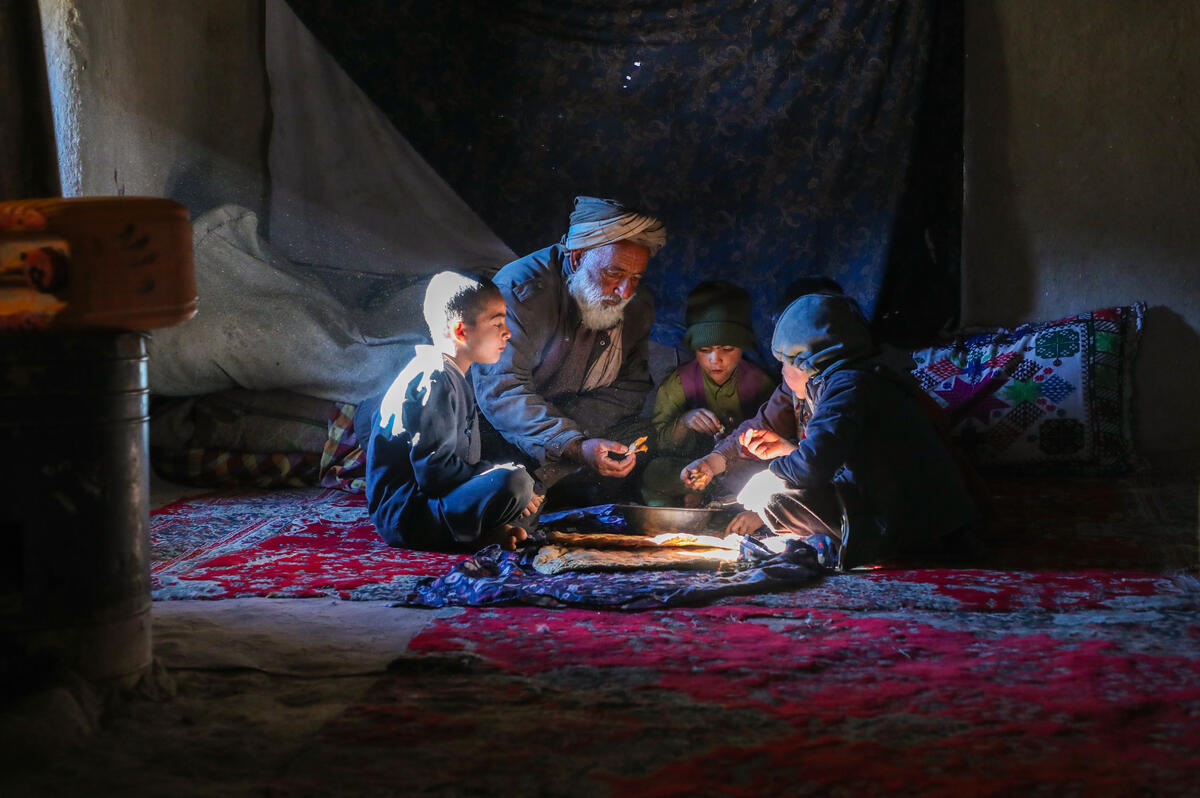Far beyond the dinner table: The hidden cost of food ration cuts

Mary Njeri, World Vision's Global Hunger Response director, sheds light on the profound impact of food ration cuts on vulnerable communities around the world, noting findings from a new food ration cuts study.
In the quiet corners of countries like Afghanistan, Somalia, and the Democratic Republic of Congo (DRC), Lebanon, Uganda, and Bangladesh, a silent crisis persists, largely unnoticed by the world. It's a crisis woven from conflict, worsened by displacement, and fuelled by dwindling resources and funding cuts. These are just a few stories of families like those of Gul Ahmad, Abdifatah, and Audré, facing hunger every day.

Amir, 13-year-old Gul Ahmad’s father, once reassured his children about food that never came. For him and many others, the scars of war led to their need for a surge of hope.
“Conflict is not a good thing. In conflicts, people lose all the good things they have. They experience displacement until they eat all they have. We lost our land, house, shop, and good life.”
– Gul Ahmad, 13, Afghanistan
In Somalia, 13-year-old Abdifatah and his grandmother faced similar struggles, forced from their home by drought and chaos. As aid dwindled, they teetered on the edge of starvation. Increasingly tired from a lack of food, Abdifatah said he finds it difficult to concentrate in school.
In Eastern DRC, 17-year-old Audré's dreams of finishing school were shattered when conflict drove her family from North Kivu to a displacement camp where they received just three months of food support. As the eldest, Audré felt like it was her duty to help support her family. However, when she went to the bush to collect firewood, she was attacked. Now, too afraid to venture beyond the camp, she’s not sure how her siblings will have enough to eat. Their hunger continues to grow while their hopes of returning to school and living a peaceful life fade and fighting persists.
These aren't isolated incidents but part of a wider crisis across multiple nations. At the heart of this crisis are food ration cuts, driven by limited budgets and scarce resources.
Our latest report shows the profound nature of these consequences, especially for children.
Two out of every five caregivers (42%) said they thought that ration cuts contributed to children suffering from hunger and malnutrition.
Hunger also affects education and future opportunities and leads to other problems, like gender-based violence, including sexual abuse and child marriage; exploitation; and child labour. Caregivers in Afghanistan (96%), Uganda (81%), and Lebanon (69%) all reported struggling to pay for their children’s education. In Lebanon, during a focus group discussion with teenage girls, they told us they were having to drop out of school to work to help their families. Two out of three refugee families (63%) interviewed in Bangladesh, the DRC, Lebanon, and Uganda also said children in their communities were being sent to work to help families make ends meet.
Yet, despite the challenges, we can still see hope. In 2023, World Vision supported over 20 million people with food and cash assistance in 46 countries, including over 16 million people in partnership with the World Food Programme (WFP). This assistance, while not a cure-all, provides a lifeline for many families, especially as over 36 million girls, boys, women, and men face ‘emergency’ levels of hunger (IPC 4) in 39 countries and more than 700,000 are experiencing ‘catastrophic’ (IPC 5) famine-like conditions.
However, to truly address hunger and malnutrition, we need action on multiple fronts. Donors and governments must prioritise funding for response efforts – in 2023, only 40% of overall humanitarian funding needs were met. This is not ENOUGH. Without action, the situation will continue to worsen.
“We are truly at a crossroads and time is running out. Leaders must go beyond mere rhetoric and deliver on their promises. Without adequate financing, the 2030 targets cannot be met.”
– UN Deputy Secretary-General, Amina Mohammed, 10 April 2024
We must strike a balance between immediate assistance and long-term development. By investing in things like health and social protection to build food security, we can empower communities and truly serve the most vulnerable.
The stakes are too high to ignore, and the consequences of inaction are too dire. Together, we must strive for a future where no child goes to bed on an empty stomach and no family worries over the source of their next meal.
Mary Njeri is the award-winning director of the World Vision's Global Hunger Response. She has over a decade of experience in emergency food distribution, resource acquisition, refugee programming, and supporting communities prepare, mitigate, respond, and recover from natural disasters and conflict in Kenya and Northern Uganda.